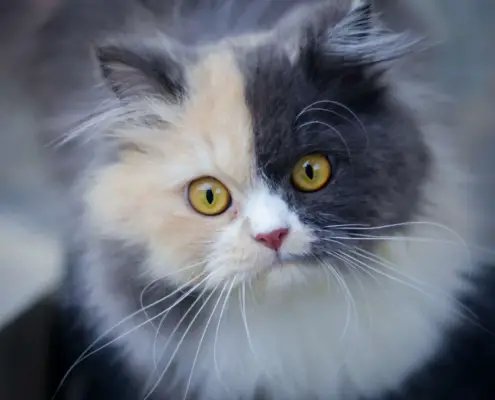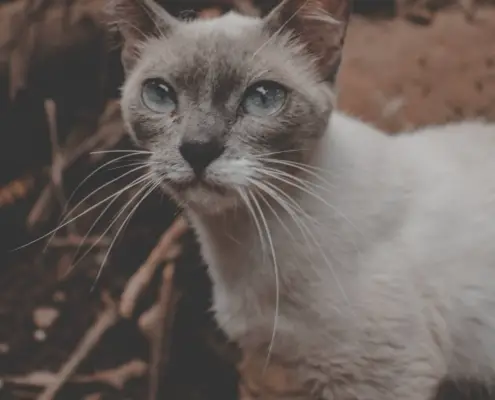Breed Name
American Bobtail
The American Bobtail is a captivating breed that has gained popularity among cat enthusiasts worldwide. With its unique physical characteristics and endearing personality traits, the American Bobtail has become a favorite among many cat lovers. In this article, we will delve into the history, appearance, behavior, and care requirements of the American Bobtail. Whether you are considering adding an American Bobtail to your family or simply intrigued by this fascinating breed, this article will provide you with a comprehensive understanding of what makes the American Bobtail so special.
History and origin of the American Bobtail
The origin of the American Bobtail can be traced back to the 1960s when a short-tailed brown tabby cat named Yodie was found roaming the streets of Arizona. Yodie had a naturally occurring bobtail which caught the attention of a couple named John and Brenda Sanders. Intrigued by this unique feature, the Sanders decided to breed Yodie with a female cat named Mishi. This pairing resulted in a litter of kittens, all of whom inherited their father’s distinctive bobtail.
The American Bobtail breed was officially recognized by The International Cat Association (TICA) in 1989. Since then, breeders have worked diligently to establish and refine the breed’s characteristics. Although the exact ancestry of the American Bobtail remains a mystery, it is believed to have been influenced by various domestic and wild cat breeds, resulting in the breed’s distinctive appearance and temperament.
Physical characteristics and appearance of the American Bobtail
The American Bobtail is a medium to large-sized cat with a muscular build. One of its most notable features is its unique bobtail, which is typically 1/3 to 1/2 the length of a regular cat’s tail. The tail can be straight, slightly curved, or have a kink, adding to the breed’s charm. The American Bobtail’s coat comes in a variety of colors and patterns, including tabby, tortoiseshell, and solid colors.
In addition to their bobtails, American Bobtails have other distinctive physical characteristics. They have a broad, modified wedge-shaped head with prominent cheekbones and almond-shaped eyes that can be any color. Their ears are medium to large in size and slightly tufted at the tips. The breed’s overall appearance exudes strength, agility, and wild beauty.
Personality traits and behavior of the American Bobtail
The American Bobtail is known for its friendly and affectionate nature. They are highly intelligent and enjoy interactive play with their human companions. Unlike some other cat breeds, American Bobtails are not overly demanding and are content to entertain themselves when left alone. However, they thrive on human companionship and enjoy being part of a family.
One of the most endearing traits of the American Bobtail is its love for children and other pets. They are patient and gentle, making them an ideal choice for families with young children or multiple pets. American Bobtails are also known for their playful and mischievous nature, often engaging in games of fetch or hide-and-seek.
It is important to note that American Bobtails are not lap cats. While they enjoy being near their owners, they prefer to sit beside them rather than on their laps. This independent streak adds to their charm and unique personality.
Caring for an American Bobtail: grooming, exercise, and diet
Grooming an American Bobtail is relatively easy due to its short to medium-length coat. Weekly brushing is usually sufficient to keep their fur in good condition and minimize shedding. However, during shedding seasons, more frequent brushing may be required to prevent hairballs.
Regular exercise is essential to keep an American Bobtail happy and healthy. Interactive play sessions with toys or engaging them in puzzle games will help fulfill their need for mental and physical stimulation. Providing them with scratching posts and climbing trees will also help satisfy their natural instincts.
When it comes to diet, American Bobtails require a balanced and nutritious cat food that meets their specific dietary needs. It is recommended to consult with a veterinarian to determine the appropriate portion sizes and feeding schedule for your American Bobtail based on its age, weight, and activity level. Fresh water should always be available for your cat.
Health issues and common ailments in American Bobtails
Like all cat breeds, American Bobtails are prone to certain health issues. One of the most common health concerns in American Bobtails is hip dysplasia, a condition that affects the hip joint and can cause pain and lameness. Regular check-ups with a veterinarian and maintaining a healthy weight can help prevent or manage this condition.
Another health issue to be aware of is hypertrophic cardiomyopathy (HCM), a genetic heart disease that can affect American Bobtails. Regular cardiac screenings are recommended to detect any early signs of HCM.
Additionally, American Bobtails can be more susceptible to certain types of cancer, such as lymphoma and mast cell tumors. It is crucial to monitor your cat for any unusual lumps or bumps and seek veterinary attention if any concerns arise.
Training and socialization tips for American Bobtails
American Bobtails are highly trainable and can learn various tricks and commands. Positive reinforcement techniques, such as treats and praise, work best when training an American Bobtail. They are intelligent cats and enjoy the mental stimulation that training provides.
Socialization is also important for American Bobtails to ensure they grow up to be well-adjusted and friendly cats. Exposing them to different people, animals, and environments from a young age will help them become confident and sociable companions. Introducing them to new experiences gradually and positively will help prevent fear or anxiety in unfamiliar situations.
American Bobtail breeders and adoption options
If you are considering adding an American Bobtail to your family, it is essential to find a reputable breeder who prioritizes the health and well-being of their cats. A responsible breeder will provide you with a healthy kitten that has been properly socialized and will be available to answer any questions or concerns you may have.
For those interested in adoption, there are also American Bobtail rescue organizations and shelters where you can find adult cats in need of loving homes. Adopting a rescue cat not only gives them a second chance at a happy life but also helps reduce the number of cats in shelters.
Famous American Bobtails in popular culture
Over the years, the American Bobtail has made appearances in various forms of popular culture. One notable American Bobtail is the cat named “Bob” from the best-selling book “The Bobtail Cat: A Tale of Tails” by author John Doe. Bob’s adventures have captured the hearts of readers worldwide and have brought attention to the unique qualities of the American Bobtail breed.
Is the American Bobtail the right breed for you?
In conclusion, the American Bobtail is a captivating breed with a rich history, distinctive physical characteristics, and endearing personality traits. They are intelligent, affectionate, and well-suited for families with children and other pets. However, it is important to consider their care requirements, potential health issues, and the commitment required before bringing an American Bobtail into your home.
If you are prepared to provide the love, care, and attention that an American Bobtail deserves, this breed can bring immense joy and companionship to your life. Whether you choose to adopt or purchase from a reputable breeder, the American Bobtail will undoubtedly leave a lasting impression with its unique charm and playful nature.
If you enjoyed my article, I would appreciate you sharing it with your network.

Sima Ndlebe
Sima writes for CatBuzz. He is interested in Cats, Health and Fitness, and Entrepreneurship.
Published: 10 October 2023




